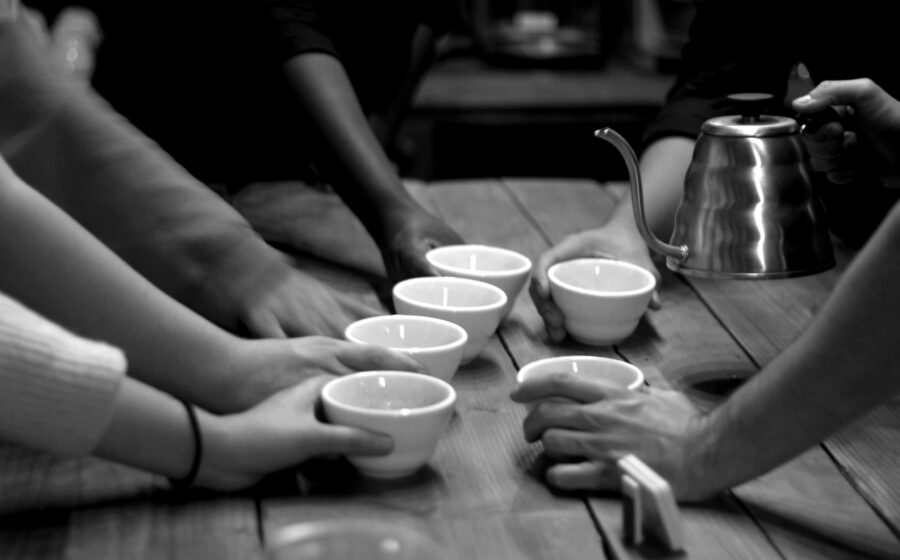[I]t’s 4:30 p.m. in the semi-industrial, semi-residential neighborhood of Long Island City, Queens. Five high school students chat quietly in the café space of Birch Coffee’s roastery.
These students aren’t here for a cup of coffee, per se; they convene at Birch once a week as part of a pilot collaboration between the coffee roaster and nearby Long Island City High School’s culinary program. “We’re really big on education within our company and so we thought why not start teaching as early as kids start consuming? There is so much opportunity for careers in coffee so we wanted to expose teenagers to a path they might not have considered,” says co-owner Jeremy Lyman.
Simone, Aisha, Citalli, Andre, and Miguel are high school juniors, and, in the midst of SATs, New York State Regents exams, and college applications, they have elected to immerse themselves in a hands-on coffee education.
This week’s class will focus on roasting, with students getting a full demo of Birch’s thirty-kilogram Loring in action. Co-owner Paul Schlader opens the session by sitting down on a stool next to the students and asking, “So what comes to mind when you think of roasting coffee?” Students pause. “Steam?” “Cooking slowly at a low temperature?” “Making it edible—well, not edible, but you know what I mean.”
The students assemble around the shiny Loring, where Paul and Birch’s managing partner, Jayson Rha, drop a batch of Guatemalan beans into the drum. Students lean in as Paul explains the difference between conduction and convection roasting, the way Cropster saves roast “recipes,” and what influences the roast curve. Students note the caramelization as Paul pulls out the trier. When the batch drops into the cooling tray he asks students to guess how many kilos the original fifty-pounds of green coffee yields after roasting. “Forty?” Simone guesses. “Close,” says Paul. “Forty-three. There’s a thirteen percent loss in weight after roasting. When I buy the coffee I’m paying for more pounds than I’ll have when I’m done.”
The students consider this. “In culinary class we always have to calculate the costs of making each dish so we know how much we would sell it for,” Miguel explains. The informality of Birch’s coffee class gives students the chance to naturally draw parallels between coffee and what they’re learning as part of their culinary curriculum. “There are also a lot of similarities in equipment,” suggests Aisha. “Like the paddles inside the Loring—it looks just like the mixer we use to make pastry dough!”
The class concludes in the cupping room, where Aisha weighs out beans and Andre grinds them in preparation for the day’s sensory practice in evaluating fragrance. When I ask if they have done a full cupping—with all the slurping and spitting—the groups’ faces light up and they nod in unison. “And everyone remembers the first step—the first thing we smell?” asks Paul. Citalli points to the SCAA flavor wheel’s categories for fragrance.
The coffee on the table is a Tanzanian, and the students are fearless cuppers; Simone smells chocolate, Miguel smells herbs, Aisha smells pomegranate.
Paul, who is a father of three, relishes his role as coffee teacher. “Being a parent, I know the importance of positively influencing the next generation. Birch has the ability to inspire teenagers by giving them a chance to see hard work in action and to explore a different kind of craft. This is my favorite part of the week.”
Birch ambitiously wants to set a precedent where coffee roasteries are active members of their communities, serving diverse populations in meaningful ways. Birch’s staple social- media and sandwich-board hashtag is #birchlovesyou, but this program shows more than love, it shows investment in New York’s human capital, demonstrating #birchforthefuture, #coffeeschoolforall.
—Rachel Northrop is a writer based in New York City. She is the author of When Coffee Speaks.















